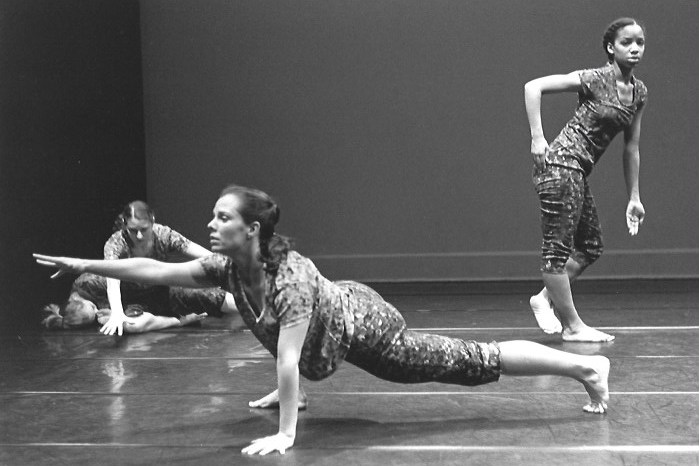In 1993 when I first visited Israel, I remember a very emotional day spent at Yad Vashem, the Holocaust Remembrance Center in Jerusalem. Among its many remembrances, Yad Vashem honors over 11,000 Righteous Gentiles. These are individuals who risked their own lives to save Jews during the Holocaust. I knew that someday I would choreograph a dance to honor them and that happened during the 2001-2002 season. That was a particularly creative season since I choreographed three pieces on four talented dancers: Andrea Eisenstein, Danielle A. Smith, Jessica Sehested, and Kerri Thoma. The Avodah Dance Ensemble had moved from a part-time dance company operating throughout the year to a full-time company operating for 16 weeks of the year. The opportunity to work so intensively for about six hours each day was very stimulating.
As I began choreographing Heroic Deeds I began to realize that something else was motivating me as well. Living in Jersey City, right across from the World Trade Center, I had witnessed, only a few months before, the collapse of the second tower as I stood about three blocks from our home and looked across the river with our neighbors. And I remembered that our youngest daughter had been working in the World Trade Center in 1993 when a truck bomb detonated inside the parking garage. Her company was located on the 97thfloor and she had walked down. She talked about how people were helping each other. There were no lights and so people were counting stairs and eventually as she got lower the NYC Firemen were coming up and providing additional guidance. As I began choreographing Heroic Deeds I found I was not only thinking of the Righteous Gentiles who risked their lives but how people can help each other in emergency situations, such as what my daughter experienced, and of course of the many first responders on 9/11 who risked their lives.
Part of both the fun and the challenge of choreographing is finding just the right music. I did, in a piece by the American composer Charles Ives. In a review by Jennifer Dunning in The New York Times (April 10, 2002) of a concert we did at the 92ndStreet Y on the previous Sunday afternoon she pointed out, “Heroic Deeds distilled community need in a quartet as stark as its score by Ives.”
Once I had the music and had begun choreographing with the collaboration of the dancers my attention turned to costumes. Finding gray tops and ¾ length pants in gray I decided to paint silver, black and lighter gray spots on them to symbolize ashes and destruction of property in an abstract way.
Tom Brazil, a dance photographer who had previously photographed Avodah, beautifully captured the energy of the piece. Here are some of my favorite photos, with the four dancers who helped to create the work. All of the following photos are by Tom Brazil and copyrighted by him.





 Print This Post
Print This Post





